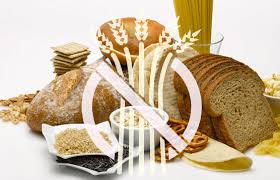Whatever you you eat, whether it’s gluten free or not, a nutritious, healthy balanced diet starts with considering quantity, quality, and variety. The goal being to ensure that your body receives all the essential vitamins and minerals it needs. For those who are avoiding gluten, the good news is that with the rise in people avoiding gluten, availability of gluten free products has also increased, making it easier to avoid gluten. However, many food companies are adding ingredients or adjusting the formulation to make the gluten-free food offerings taste more appealing but losing nutritional elements along the way, so it’s vital for you to look at the types of gluten free foods you eat.How do you avoid gluten in your diet?
- Learn to read labels: Common forms of gluten, such as wheat, barley, oats and rye, are easy to spot but avoiding these products can be challenging since wheat is often labeled by other names. Avoid anything with bulgar, durum flour, farina, graham flour, semolina and spelt. Do your research so you know exactly what to avoid when reading labels or a menu. If you have questions, contact the coeliac society to help you through the process of going gluten free.
- Beware of hidden gluten: Gluten is included in many products that you might not expect like condiments, sauces and drinks, e.g., raw meat is gluten free, but processed meats, deli meats, sausages and hot dogs often add flour (which contains gluten) as filler or to add texture to the product.
- If possible, go organic: By choosing gluten-free foods that are also organic, you will avoid consuming unnecessary additives, chemicals and pesticides.
- Be creative: Giving up your favourite foods can be frustrating, but you don’t have to because with a little time and creativity, you won’t notice the difference, except in the way you feel. Don’t be afraid to try different combinations and new recipes using our LiveFree GlutenFree mixes.
Remember the only limit to your balanced nutritious and tasty gluten free diet is your imagination !
There’s no problem about asking questions about gluten-free diets to make the right food choices for you and your family. The first step is speaking to a registered doctor, nutritionist or dietician if you think you or your family member are gluten intolerant.





